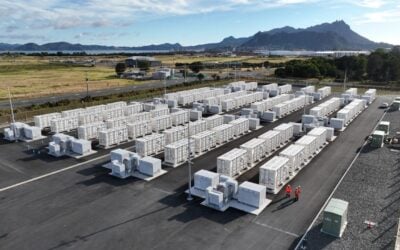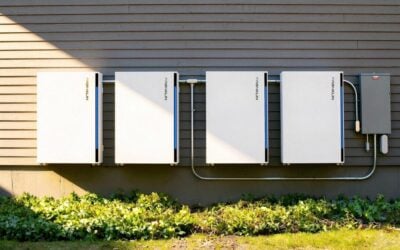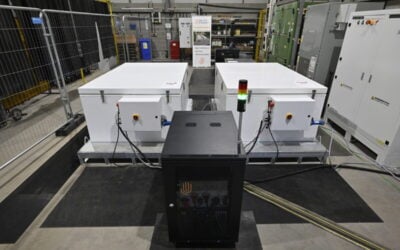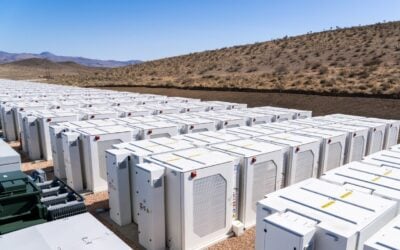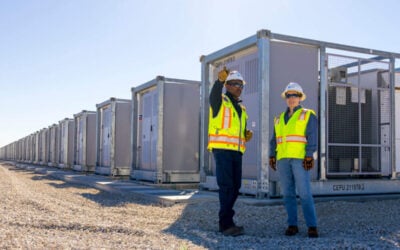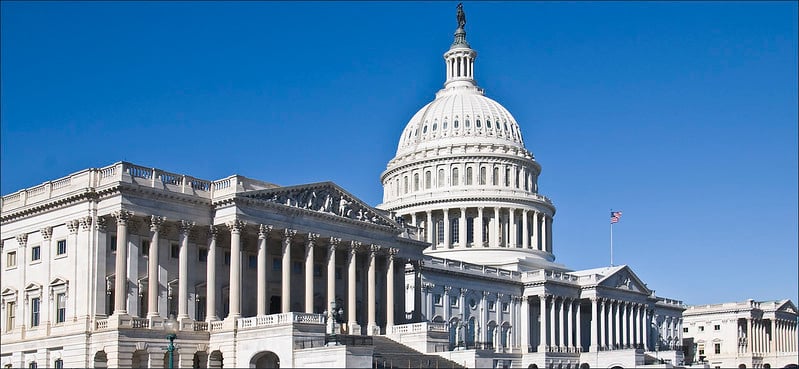
Legislation to help the US economy invest in clean energy jobs and support innovation and industry passed the House of Representatives this week – and Energy Storage Association (ESA) CEO Kelly Speakes-Backman applauded the prominent inclusion of energy storage in the bill.
Next stop for the Clean Economy Jobs and Innovation Act will be the upper house of US Congress, the Senate. The bill includes wide-ranging measures on: energy efficiency, renewable energy, carbon pollution reduction technologies, nuclear energy, the electric grid and cybersecurity, transportation, research and innovation, technology transfer, industrial innovation and competitiveness, critical materials and environmental justice.
Energy storage is mentioned prominently for its role in renewable energy, with the bill calling for consideration of energy storage systems and coordination of programmes in renewables integration, as well as the development of assistance programmes for energy storage and renewable-powered microgrid deployment.
Energy storage is also mentioned in the context of enhancing electric grid reliability and its relevance to the supply chain for critical raw materials – like Europe, the US has put lithium and other materials used in battery making onto a list of such materials.
Try Premium for just $1
- Full premium access for the first month at only $1
- Converts to an annual rate after 30 days unless cancelled
- Cancel anytime during the trial period
Premium Benefits
- Expert industry analysis and interviews
- Digital access to PV Tech Power journal
- Exclusive event discounts
Or get the full Premium subscription right away
Or continue reading this article for free
“Today the U.S. House of Representatives moved definitively to elevate the priority of public innovation investments in energy storage. By passing H.R. 4447, the Clean Economy Jobs and Innovation Act, numerous bipartisan proposals for promoting energy storage are moving forward, including increasing R&D and demonstration investments in energy storage technology, integrating storage across all DOE Energy offices, assisting rural customers with storage for resilience, and incorporating storage into public investments in transportation electrification and workforce development,” Kelly Speakes-Backman of the national ESA said.
“ESA is pleased to support these efforts to ready the electric system for 21st century demands to provide resilient, efficient, sustainable, and affordable electric service. We encourage members of the Senate to swiftly advance their similar legislation this Congress.”
Various politicians across the US made their own statements on the bill yesterday, including California 44th Congressional District Congresswoman Nanette Diaz Barragán, who pointed out that as well as committing to critical investments in electric vehicle deployment, community solar generation and climate environmental justice programmes, the Act also has “crucial regulations for reducing climate-warming hydrofluorocarbon (HFC) pollution. If adopted, this could prevent a half degree Celsius of warming by mid-century,” Diaz Barragán said.
“The Clean Economy Jobs and Innovation Act will make a difference in slowing climate change and reducing the harm climate change and air pollution are causing frontline environmental justice communities.”
While the Congresswoman said the Act was flawed in that it “provides far more support for fossil fuels research than it should,” including pledges in working towards carbon capture and storage for coal and gas plants, she said “the benefits are worthy of my support”.
The bill’s passing by Representatives was also welcomed by the World Wildlife Fund (WWF), with senior VP for policy and government affairs at the charity Alejandro Perez stating the package “will help advance cutting-edge research, development, and innovation, which are essential for the bolder actions required to address the climate crisis.”
“Those bolder steps are yet to come, and Congress needs to do much more to ensure that innovation is paired with a focus on environmental justice and actions to ensure that we phase out greenhouse gas emissions and the use of fossil fuels by 2050 at the latest,” Perez said.
House Majority Leader Steny Hoyer, Representative for Maryland’s 5th Congressional District, pointed out last week the impact the bill would have in creating “high-paying jobs by making America a global leader in clean energy”.
“Our climate is changing, and we not only need to take dramatic steps to slow the carbon pollution that has driven this climate crisis but we must also seize the economic opportunities that this challenge presents,” Hoyer said.
However, reaction was not all positive from clean energy advocates. Gregory Wetstone of the American Council on Renewable Energy (ACORE), said that his organisation has endorsed many of the provisions in the Clean Economy Jobs and Innovation Act.
But “even the most productive federal R&D won’t be commercialised and deployed for a number of years, and there is precious little in this legislation to accelerate the decarbonisation of our electric grid today,” he continued.
“What the renewable sector needs most right now is temporary refundability for renewable tax credits so that renewable energy projects can be completed in spite of a COVID-constrained tax equity market, and a delay in the scheduled phasedown of existing credits in recognition of the adverse nationwide impact the pandemic has had on renewable deployment this year. Enacting these commonsense emergency relief measures into law would stem job losses in every state, keep us from falling even further behind our climate commitments, and help the renewable sector power the nation’s economic recovery.”

